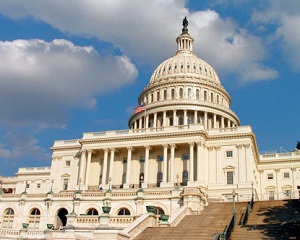Treasury grant 1603 has fighting chance
 As the debate over the Bush tax breaks continues to rage in Washington, D.C., a bipartisan group of Senators were able to include an extension of 1603 Treasury grants in the Senate’s version of the tax bill. The grants have been an important tool in expanding the renewable energy industries and job growth.
As the debate over the Bush tax breaks continues to rage in Washington, D.C., a bipartisan group of Senators were able to include an extension of 1603 Treasury grants in the Senate’s version of the tax bill. The grants have been an important tool in expanding the renewable energy industries and job growth.
Both Democrat and Republican Senators supported the provision extending the Treasury grants. The effort was led by Democrats Diane Feinstein, Calif., and Maria Cantwell, Wash. Other Democrat Senators supporting the measure included: Mark Udall, Colo.; Mark Begich, Alaska; Patty Murray, Wash.; Chris Coons, Del.; Barbara Boxer, Calif.; Ron Wyden, Ore.; Tim Johnson, S.D.; Patrick Leahy, Vt.; Ben Nelson, Neb.; Chris Dodd, Conn.; Sheldon Whitehouse, R.I.; Tom Udall, N.M.; Robert Menendez, N.J.; Jeff Merkley, Ore.; and Byron Dorgan, N.D. They were joined by Republicans John Ensign, Nev., and George LeMieux, Fla.
Yesterday, Clean Energy Authority reported that the Solar Energy Industry Association (SEIA) and the American Wind Energy Association (AWEA) were urging Congress to include a two-year extension of the grants, which allow developers of large-scale renewable energy projects to receive quick payments for developing projects, rather than wait for tax credit incentives.
At that point letters were circulating through the Senate and the House, urging leaders to support the extension.
The pressure in the Senate worked. The provision was included in the bill. The House version of the letter has 81 supporters, but the House has not yet introduced tax legislation.
In a Dec. 10 press release SEIA President Rone Resch said, “The 1603 tax credit has created flexibility for funding renewable energy projects and is fundamental for keeping the solar industry growing in America.” He added that the program supported $18 billion in new renewable energy projects and enabled 1,100 projects in 42 states.
Resch said, “The program has allowed the solar industry to grow by over 100 percent in 2010, create enough new solar capacity to power 200,000 homes and double domestic solar employment to more than 93,000 Americans.” He also said the program has created new opportunity for electricians, plumbers, and construction workers during the worst economic climate since the great depression.
“Senate debate is likely next week, and we are hearing cloture vote on Monday afternoon,” said SEIA spokesperson Jared Blanton. What happens after that remains to be determined, he said.
Image courtesy of destination360.



